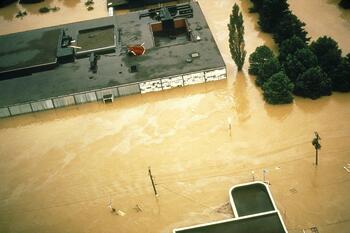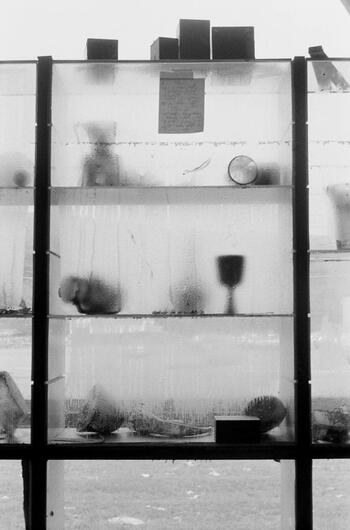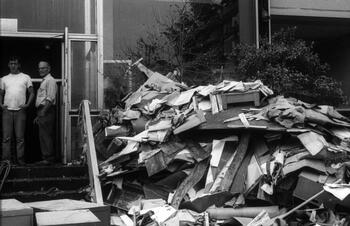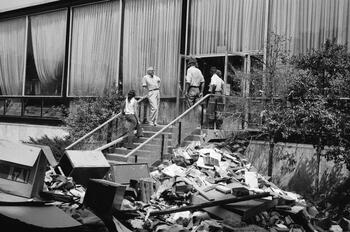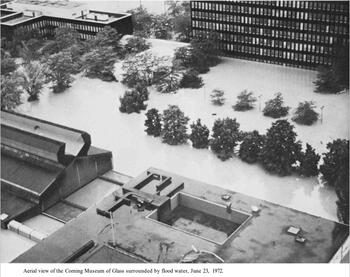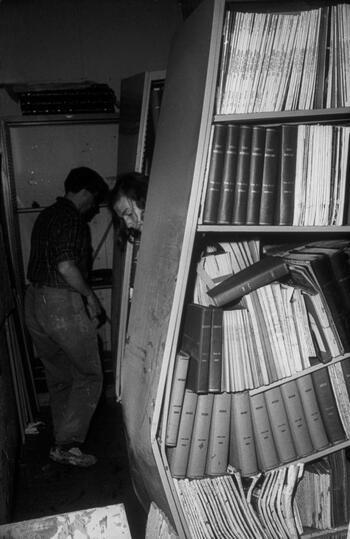The Corning Museum of Glass contains artifacts from 3,500 years of glassmaking and is the largest museum of its kind in the world, bringing thousands of tourists to Corning for this cultural landmark. On June 23, 1972, floodwater rose to 5’4” on the main floor, completely flooding the rare and special collections in the museum’s library, damaging over 500 glass items, and covering the entire museum and the 13,000 items in its collection in mud.
The entire photographic collection of 22,000 prints were submerged in the filthy water, as well as 22,000 negatives and sixty percent of the museum's 50,000 color slides. Six hundred rare books were submerged in floodwater, and the reaction of the centuries-old paper, vellum, and leather bindings with the water caused extensive damage to the books that took decades to counteract.
Thomas S. Buechner, the former director of the museum, called it “the greatest single catastrophe borne by an American museum.” While the unprecedented damage to the exhibits and the library took years to fully recover from, the Glass Museum audaciously pledged to reopen just six weeks after the flooding. The Museum opened 39 days after the flood, on August 1, 1972.
A later section of this exhibit is dedicated to the innovative recovery efforts undertaken to restore the museum and its materials.
Aerial view of The Corning Museum of Glass surrounded by flood waters from 1972 hurricane Agnes. Courtesy of the Corning Museum of Glass.
This close aerial view of the museum shows just how high the water rose. John Fox, the Glass Center’s director at the time of the flood, had to be rescued by helicopter along with several guests from the museum’s roof when the flood water surrounded it and washed away their cars.
Flood damaged gallery case. Courtesy of the Rakow Research Library of The Corning Museum of Glass.
This museum display case shows signs of mud and damage, and a line of dirt on the top shelf where the water reached its maximum height. Cases like this filled with water, causing the delicate glass objects to float up with the wooden blocks that they had been sitting upon. When floodwaters naturally drained from the cases, the heavy blocks sometimes crushed the glass objects.
Fortunately, this case did not fall over like several others did. The interior of the museum was under more than five feet of water.
Mound of debris. Courtesy of the Rakow Research Library of The Corning Museum of Glass.
Here, wrecked furniture has been moved outside the museum and is awaiting disposal.
Debris. Courtesy of the Rakow Research Library of The Corning Museum of Glass.
The exhibits and the museum’s furnishings were destroyed by the flood, as well as staff offices.
Aerial View of the Corning Museum of Glass surround by flood water, June 23, 1972. Courtesy of the Corning Museum of Glass.
This picture, excerpted from the museum's 1977 book, Museum Under Water, shows the extent of flooding on the campus of the Corning Museum of Glass.
Periodical shelving. Courtesy of the Rakow Research Library of The Corning Museum of Glass.
Books and shelving in the library absorbed floodwaters, causing shelves to buckle and further damage.
